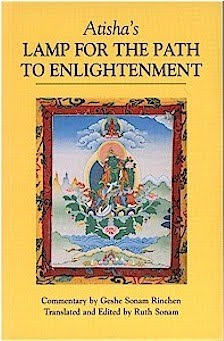It is the Healthy Ego Which Attains Enlightenment

It is the healthy ego which attains enlightenment. That means that the result of correct Buddhist training does not beat our sustaining life force but enters it into correct alignment with higher being. This is the method of the Heruka tantras. There is a renewed life force vigor that comes from aligning our energetic being with higher functioning values of heroic compassion inner models. To damage our life force by beating it into submission when we begin to feel stronger and more capable, weakens the trust between body and mind and would prevent correct tantric practice. Inappropriate pride that struggles to control what belongs to higher being is the wrong ego and false self. Compassion practices change our perceptions about self and its relationship to others and allows false pride to dissolve. The reduction of self-cherishing dissolves wrong views based on primary self-interest and allows the remaining self-interest to attach to a valid transitional object; whatever is the current...











